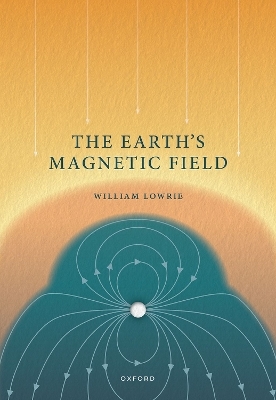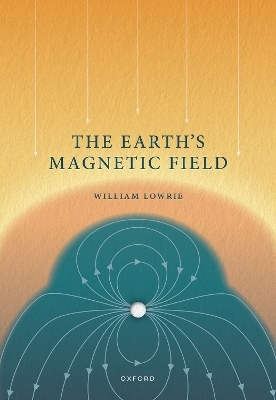
Eruptive Solar Flares
Springer Berlin (Verlag)
978-3-662-13874-8 (ISBN)
History and basic characteristics of eruptive flares.- Basic magnetic configuration and energy supply processes for an interacting flux model of eruptive solar flares.- The role of cancelling magnetic fields in the buildup to erupting filaments and flares.- Variation of the vector magnetic field in an eruptive flare.- Intrinsically hot flares and a possible connection to deep convective magnetic fields.- Interaction of large-scale magnetic structures in solar flares.- The intrinsic relationship between flares and eruption of filament currents.- Filament eruptions, flaring arches and eruptive flares.- MHD non-equilibrium: A numerical experiment.- Triggering of eruptive flares: Destabilization of the preflare magnetic field configuration.- Field opening and reconnection.- Energy release at Alfvénic fronts in a force-free magnetic flux tube.- Energy transport in solar flares: Implications for Ca XIX emission.- Fluid flow in a jet and the CA XIX line profiles observed during solar flares.- Characteristics of the impulsive phase of flares.- Comparison of UV and X-ray solar flare observations and theoretical models.- White-light flares.- "Post" flare loops.- Plasma parameters derived from MSDP observations of cool flare loops.- Flare evolution in the density temperature diagram.- The Neupert Effect: What can i tell us about the impulsive and gradual phases of eruptive flares?.- Particle acceleration in the impulsive phase of solar flares.- Kinetic description of electron beams in the chromosphere.- Nuclear reactions in flares.- Radio emission of eruptive flares.- Arcsecond determination of solar burst centers of emission simultaneous to high time resolution and high sensitivity at 48 GHz.- Trapping and escape of the high energy particles responsible for major protonevents.- Coronal and interplanetary transport of solar flare protons from the ground level event of 29 september 1989.- High energetic solar proton flares of 19 to 29 October 1989.- Large-scale quasi-stationary X-ray coronal structures associated with eruptive solar flares.- Large scale structures associated with eruptive flares and radio waves.- Coronal millimeter sources associated with eruptive flares.- On the association between large scale X-ray brightenings and solar flares.- A giant post-flare coronal arch observed by Skylab.- Characteristics of coronal mass ejections.- The solar sources of coronal mass ejections.- Remote sensing observations of mass ejections and shocks in interplanetary space.- In situ observations of coronal mass ejections in interplanetary space.- Meter-decameter radio emission associated with a coronal mass ejection.- Models of normal and inverse polarity filament eruptions and coronal mass ejections.- MHD shocks and simple waves in CMES.- Terrestrial response to eruptive solar flares: Geomagnetic storms.- Stellar flares: Confined or eruptive events?.- Radio flare emission from late-type stars.- The Solar-A mission experiments and the targets.- Nobeyama radioheliograph.- Decimeter high resolution solar radio spectroscope.- Considerations of a Solar Mass Ejection Imager in a low-earth orbit.- An Observational-conceptual model of the formation of filaments.- Dynamics in the prominence-corona transition region from HRTS spectra.- Active region classifications, complexity, and flare rates.- Compact sources of suprathermal microwave emission detected in quiescent active regions during lunar occulatations.- Velocity field in the 13 June 1980 flare area.- Deformation of magnetic null points.- The X12 limb flare and spray of 01 June 1991.- Analysisof X-ray flares observed by the SMM spacecraft.- Distribution function for electron beams in the chromosphere.- Sub-second variations of HXR and H-alpha flare emission.- The role of protons in solar flares.- High spectral resolution of MM-wavelength (23 - 18 GHz) solar bursts.- Microwave flare characteristics in 8 and 3 mm Metsähovi measurements compared with optical and H-alpha data.- Simultaneous H? and microwave observations of a limb flare on June 20, 1989.- Nonresonant ion-beam turbulence in solar flares.- Nonlinear emission mechanism of type III solar radio bursts.- A numerical simulation of magnetically driven coronal mass ejections.- Coronal mass ejections: The link between solar and geomagnetic activity.- A study of geomagnetic variations with periods of four years, six months and 27 days.- Atmospheric models of flare stars.- The emerging picture of eruptive solar flares.
| Erscheint lt. Verlag | 20.11.2013 |
|---|---|
| Reihe/Serie | Lecture Notes in Physics |
| Zusatzinfo | XIV, 409 p. 94 illus. |
| Verlagsort | Berlin |
| Sprache | englisch |
| Maße | 170 x 244 mm |
| Gewicht | 727 g |
| Themenwelt | Naturwissenschaften ► Geowissenschaften ► Geophysik |
| Naturwissenschaften ► Physik / Astronomie ► Astronomie / Astrophysik | |
| Schlagworte | chromosphere • Energy • Planet • Solar • Solar flare • Transport • Variation • X-Ray |
| ISBN-10 | 3-662-13874-3 / 3662138743 |
| ISBN-13 | 978-3-662-13874-8 / 9783662138748 |
| Zustand | Neuware |
| Haben Sie eine Frage zum Produkt? |
aus dem Bereich


